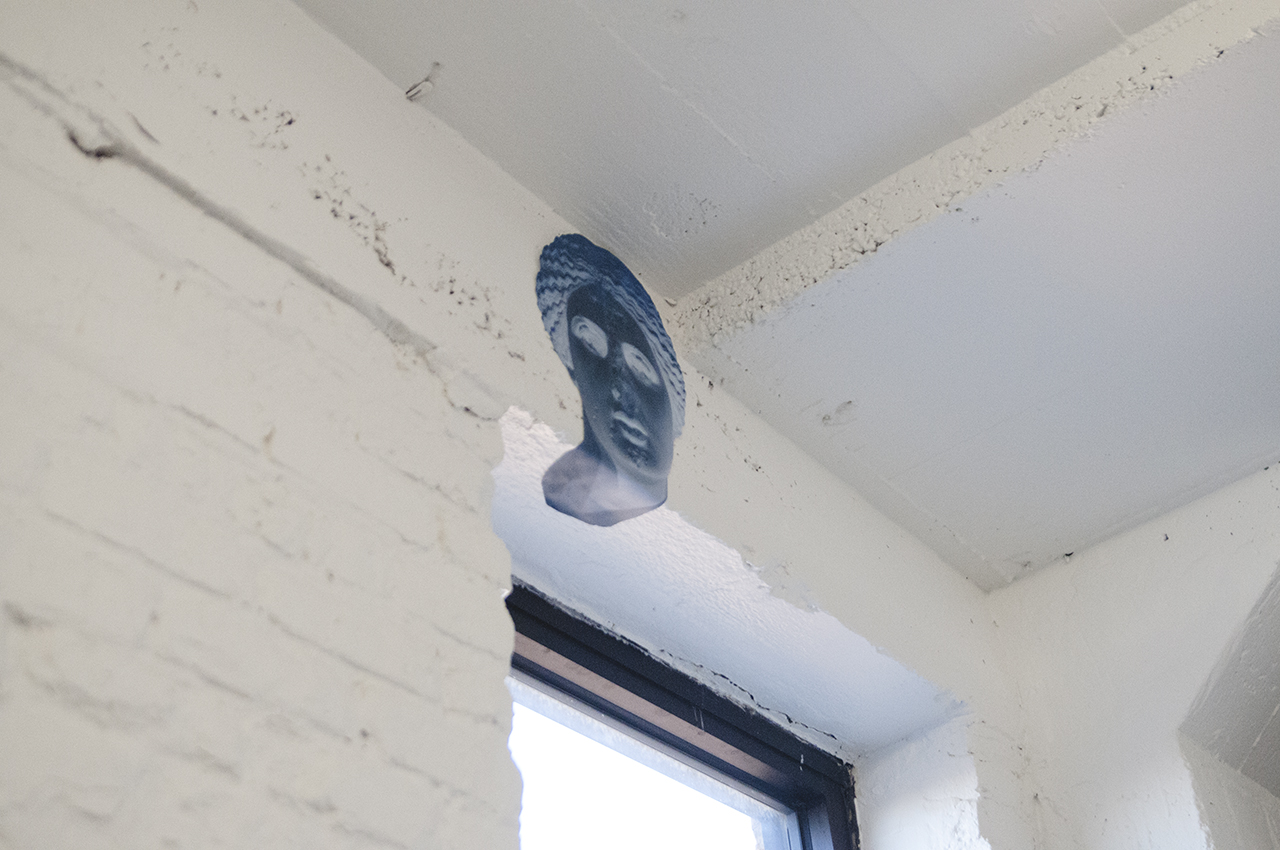Inside\Within is a constantly updating web archive devoted to physically exploring the creative spaces of Chicago's emerging and established artists.
Support for this project was provided by The Propeller Fund, a joint administrated grant from Threewalls and Gallery 400 at The University of Illinois at Chicago.

Search using the field below:
Or display posts from these tags:
3D printing 3D scanning 65 Grand 7/3 Split 8550 Ohio 96 ACRES A+D Gallery ACRE animation Art Institute of Chicago Arts Incubator Arts of Life audio blogging Brain Frame CAKE Carrie Secrist Gallery casting ceramics Chicago Artist Writers Chicago Artists Coalition Chicago Cultural Center Cleve Carney Art Gallery Clutch Gallery Cobalt Studio Coco River Fudge Street collage collection Columbia College Chicago Comfort Station comics conceptual art Contemporary Art Daily Corbett vs. Dempsey Creative Capital DCASE DePaul University design Devening Projects digital art Dock 6 Document drawing Duke University dye Elmhurst Art Museum EXPO Chicago Faber&Faber fashion fiber Field Museum film found objects GIF Graham Foundation graphic design Harold Washington College Hatch Hyde Park Art Center illustration Image File Press Imagists Important Projects ink installation International Museum of Surgical Science Iran Jane-Addams Hull House Museum jewelry Joan Flasch Artist's Book Collection Johalla Projects Julius Caesar Kavi Gupta Links Hall Lloyd Dobler LVL3 Mana Contemporary metalwork Millennium Park Minneapolis College of Art and Design Monique Meloche Museum of Contemporary Art Chicago (MCA) Museum of Contemporary Art Detroit (MOCAD) Museum of Contemporary Photography (MoCP) National Museum of Mexican Art (NMMA) National Resources Defense Council New Capital Northeastern Illinois University Northwestern University Ox-Bow painting paper mache Peanut Gallery peformance Peregrine Program performance photography PLHK poetry portraiture printmaking public art Public Collectors publications Renaissance Society risograph rituals Roman Susan Roots&Culture SAIC screen printing sculpture Sector 2337 Shane Campbell Silver Galleon Press Skowhegan Slow Smart Museum Soberscove Press social practice South of the Tracks Storefront SUB-MISSION Tan n' Loose Temporary Services Terrain Terrain Biennial text-based textile textiles The Banff Centre The Bindery Projects The Cultural Center The Franklin The Hills The Luminary The Packing Plant The Poetry Foundation The Poor Farm The School of the Art Institute of Chicago (SAIC) Threewalls Tracers Trinity College Trubble Club University of Chicago University of Illinois at Chicago (UIC) University of South Florida at Tampa Valerie Carberry Vermont Studio Center video weaving Western Exhibitions wood carving woodwork Yellow Book Yollocalli Arts Reach zinesInside\Within is produced in Chicago, IL.
Get in touch:
contactinsidewithin@gmail.com
Erin Washington’s Porous Palimpsests
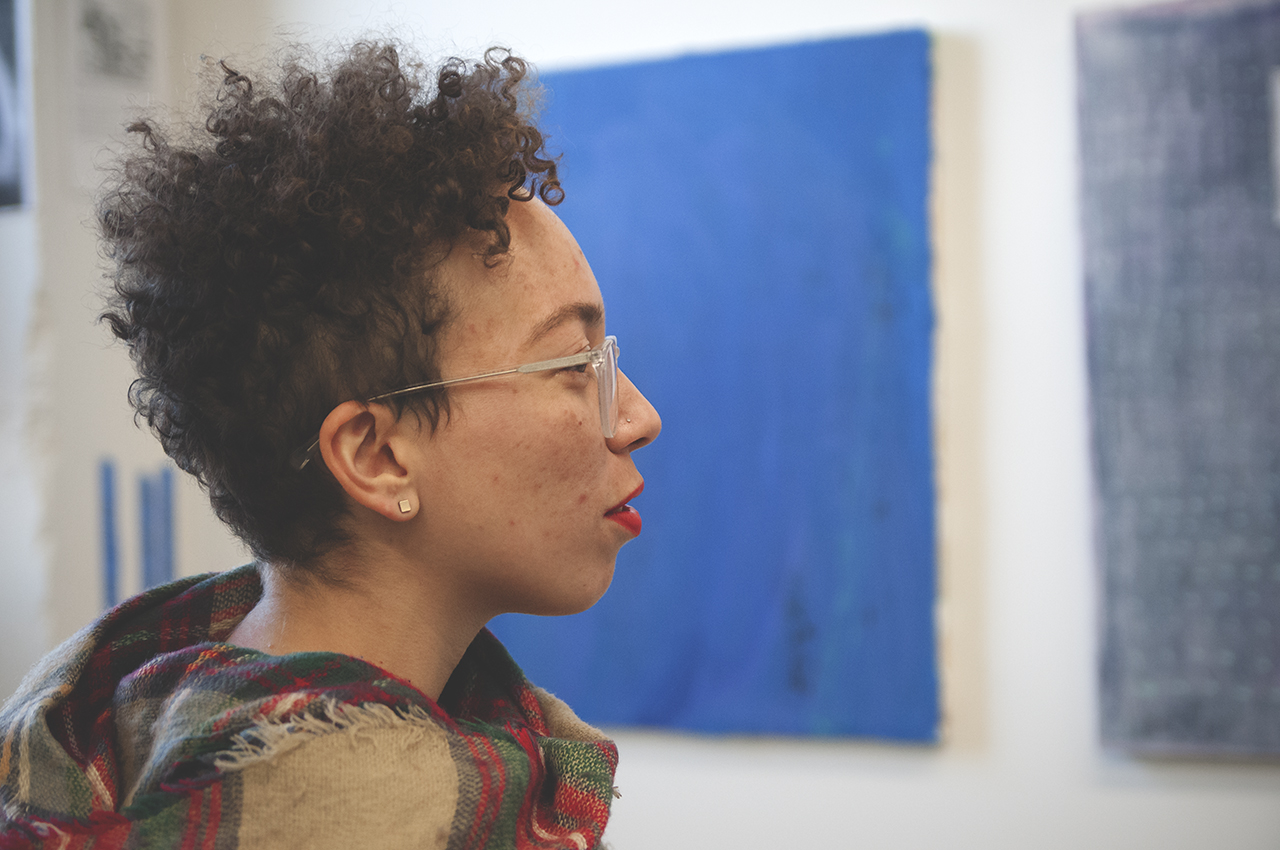
Utilizing material as content, Erin produces works on handmade chalkboards with ephemeral materials such as coffee, chalk, and dust. Her works claim the labels of both painting and drawing as she continuously adds and erases marks on top of the abstract pieces. This layering express the history of each work’s construction, leaving evidence of prior marks and feelings within the porous materials. Inspired by the institution in which she works, Erin often pulls imagery from sculptures found in the Art Institute of Chicago, placing ancient Greek pieces like Head of Aphrodite onto her chalk-based works.
I\W: Why are you interested in producing work with non-archival materials like chalk, blackberries, coffee, dust, mold, etc.?
EW: Materials can have potent symbolic power. But, even if the materials or the form of the work changes, the essential content or motivation for making work stays the same. I am interested in ideas of fragility and ephemerality—ideas that investigate why a temporal someone would be compelled to create something that “stands the test of time.” Nothing lasts forever. Even the super “important” works at the Art Institute have a half life (entire people’s careers are built out of maintaining the lifespan of these pieces). I am interested in that slippage. So, it made sense to use more ephemeral or porous materials if I was going to reference these subjects. There was point when I was beginning to think about these things, when I was using the permanence of oil paint to explore ambiguity and/or death, and it really didn’t make sense. Using more porous materials more efficiently guides the viewer towards those ideas.
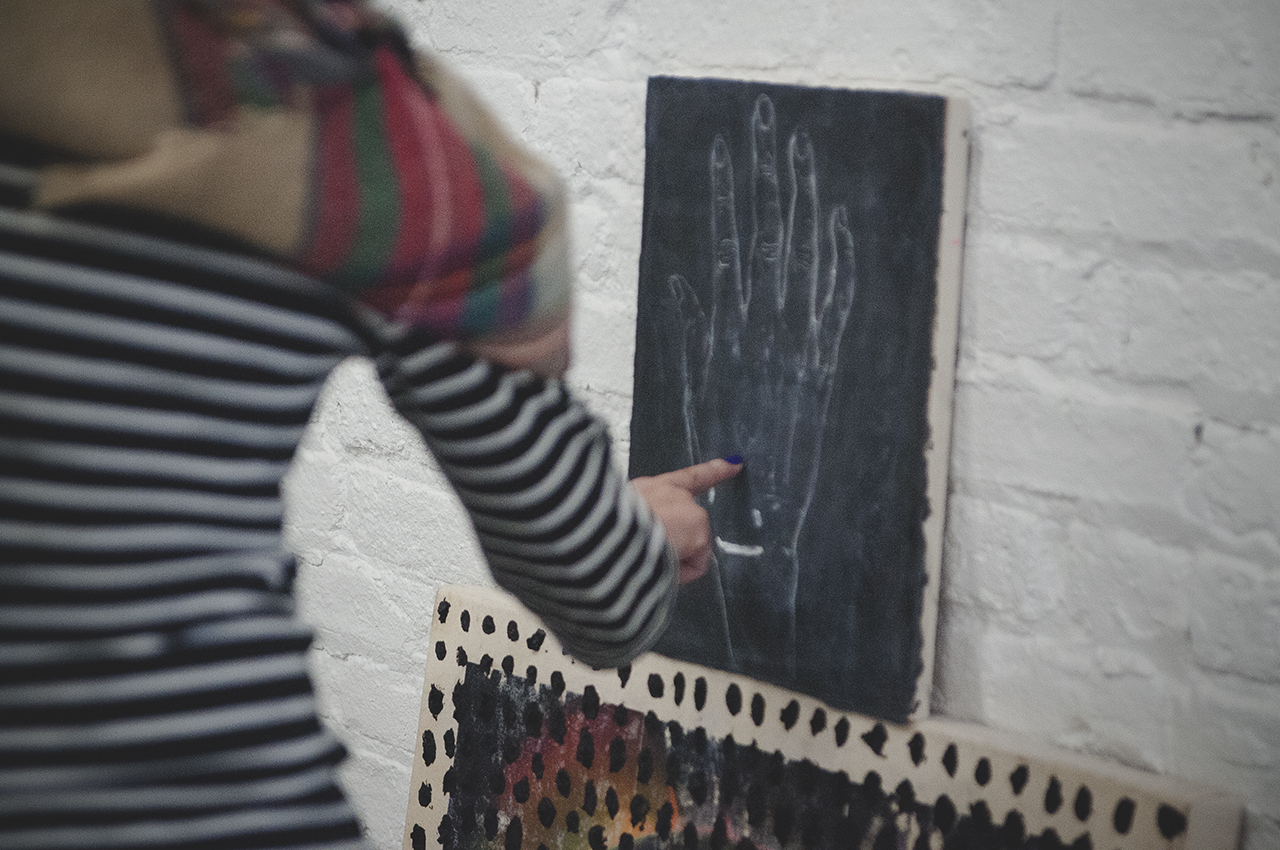
You often balance that fragility with something more durable or long-lasting, like space blankets. Can you talk about why that balance is important to you?
I think it is super powerful to really forefront vulnerability, to point out that you yourself are sensitive and human. I like that you picked up on the space blankets, that’s a great example of a material that contains that balance you’re referring to. The space blankets are quite fragile…it is metalized mylar and they rip like butterfly wings. But they’re heat-reflective, originally developed by NASA to resist hostile space environments. To think that this super delicate thing can also protect against these invisible, ominous forces outside of ourselves, but then also be small enough to carry in a survivalists’ emergency pack is interesting. Perhaps a good parallel (and it relates to my personal identity—a little bit on an aesthetic level) is Afrofuturism. I’m going to not just acknowledge my “other-ness,” my alien-ness (and as it pertains to this question, my vulnerability), I am going to revel in it, and that gives me life and makes me, and the work, stronger.
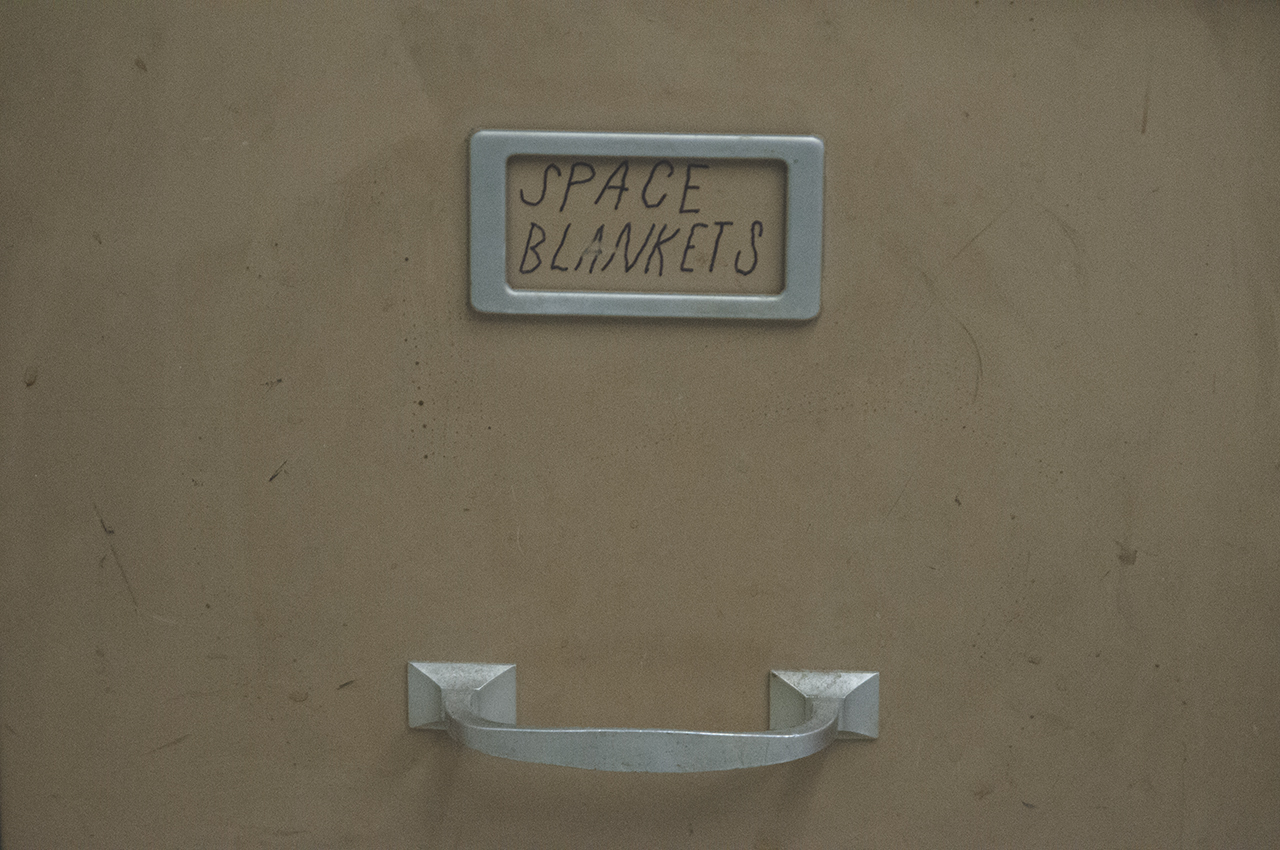
To get a bit more technical, are you using actual chalkboard paint for your chalk-based works?
I was for a while, but was really restricted chromatically. A couple of years ago, I figured out how to make my own “chalkboard” paint. I was no longer restricted chromatically and could make surfaces that would be more porous and still hold all the residue of past marks. I can now make a purple or blue chalkboard. I am really happy about that because there is still a sort of separation between painting and drawing for me. I like making weird abstract paintings and then sort of ignoring them by drawing on top of them.
I am interested in ideas of fragility and ephemerality—ideas that investigate why a temporal someone would be compelled to create something that “stands the test of time.” Nothing lasts forever. Even the super “important” works at the Art Institute have a half life (entire people’s careers are built out of maintaining the lifespan of these pieces).
Why did you decide to leave the science field to become an artist?
Biographically I did not have any artists around me growing up. I didn’t know what that looked like, and I don’t think the adults in my life did either. They saw what was a young artist’s questioning/observing mind and pushed me towards science. I got through about two years of a pre-med track in undergrad— I would take 15 credits of science and three of art and then proceed to spend all of my time on art. When I was studying for science, I would make hundreds of drawings of bones, and nerves and muscles because that was the only way I could digest the scientific information. After a while, it was pretty obvious that drawing was where it was at for me. Drawing and painting and making weird objects communicated what I was interested in far better than data or a scalpel.

Why do you choose to build in a process to your practice that so readily maps your thoughts through the works’ development?
Drawing is a way of mapping what is going on inside your mind through time, and body through space. Even the relative proportions of paintings relate to that—they are often either the size of my head, or head to gut. I remember in an Art History class, learning that you can take X-rays of paintings to examine the previous layers of paint and how they were applied. Learning that you could see underpaintings, even mistakes and corrections. The history of the painting was absolutely revelatory. I remember telling my little brother about the X-rayed paintings when he was studying film. The idea really got him going too. He started wondering if there could be a painter who only had one canvas for their entire life and make hundreds of paintings on that one surface. I thought that was a beautiful four-dimensional (time-based) way of thinking about a flat two-dimensional space. I think a seed of that conversation germinated into my current palimpsestic method of working. The viewer can see the erased marks from previous drawings in each piece, they can see the history of each piece’s making and the evidence of my prior movements.
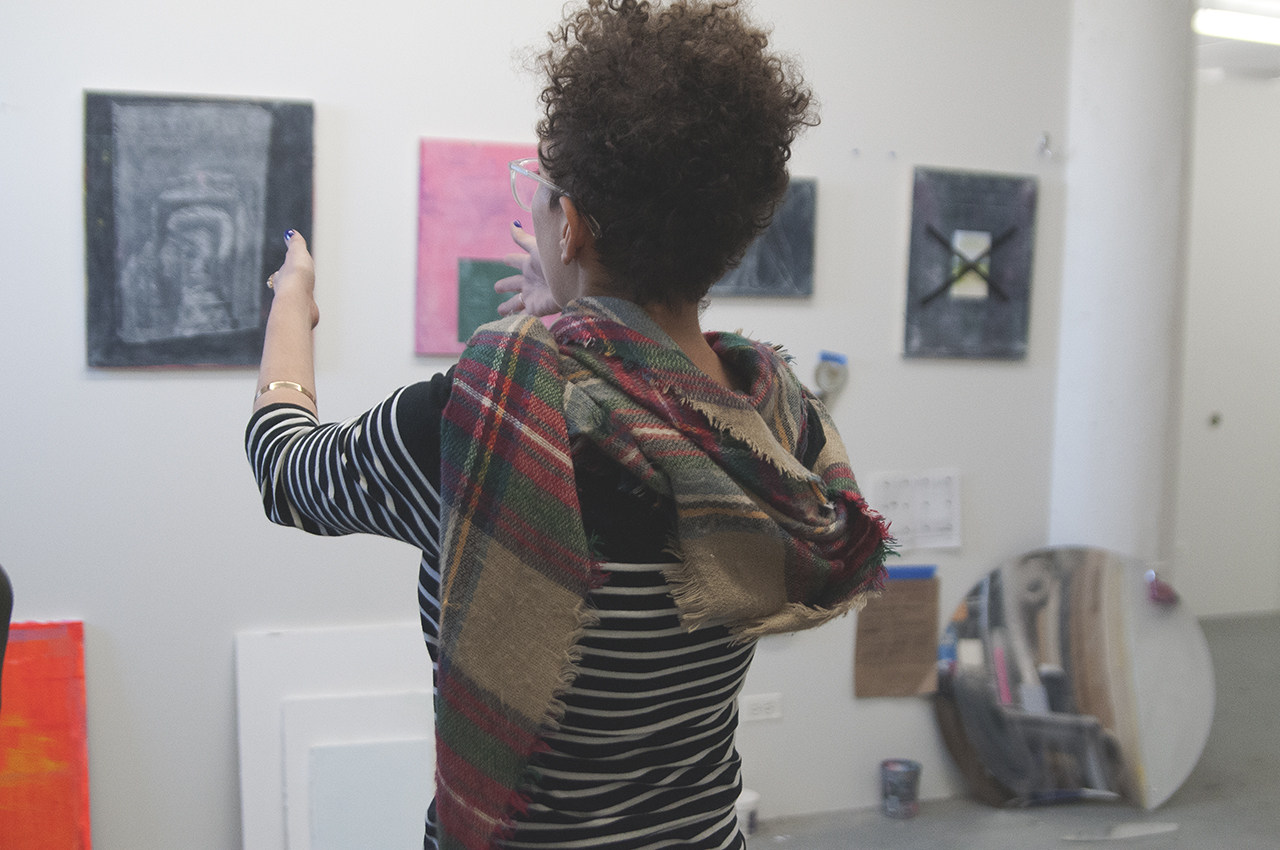
What purpose do the purposeful dots in many of your works serve as?
I create those dots when I don’t know what to do next. When I make repetitive dots, I attempt to center myself with pigment rather than fretting over the image. Each dot is a meditative return to the moment. For example: I have a painting that references a passage in James Joyce’s Ulysses. There is a monologue where Leopold Bloom thinks about blotting out the sun with his thumb. Here is a tiny human in the middle of the void, staring up at a gigantic fiery star billions of miles away, and just with the edge of his thumb he can still exert control over his surroundings. The passage beautifully captures being OK with being this tiny fragile thing by finding ways to place your body in the scale of the universe. So in that painting, there is a found photograph of the Sun with hundreds of thumb-print paint dots on its surface.

Why do you often draw inspiration from ancient Greek and art historical images?
I work at an institution where I can go to the Art Institute every day for free. If I go [between campus buildings at The School of the Art Institute] the museum’s purpose is reduced to that of a hallway. I started thinking about these objects as daily personal totems, which is an interesting relationship to have to these artists and objects. Head of Aphrodite is one of the first objects I referenced from the museum. She appears in my painting Ruin and cosmic dust. I would only see this artifact when I was running between buildings. Like most recovered busts, some of her extremities are chipped off and she’s missing her nose. I’d see her at my most busy moments of the day and think of the phrase, “Put your nose to the grindstone.” I started researching this bust and realized she has a cross carved into her forehead. Christians would deface “pagan” idols to remove their power. My interests don’t stop at the Byzantine though. I reference multiple eras and cultures in different works. There’s a school of thought that every artist has to slowly digest art history in order to understand their own work, just like a snake eating its own tail.
